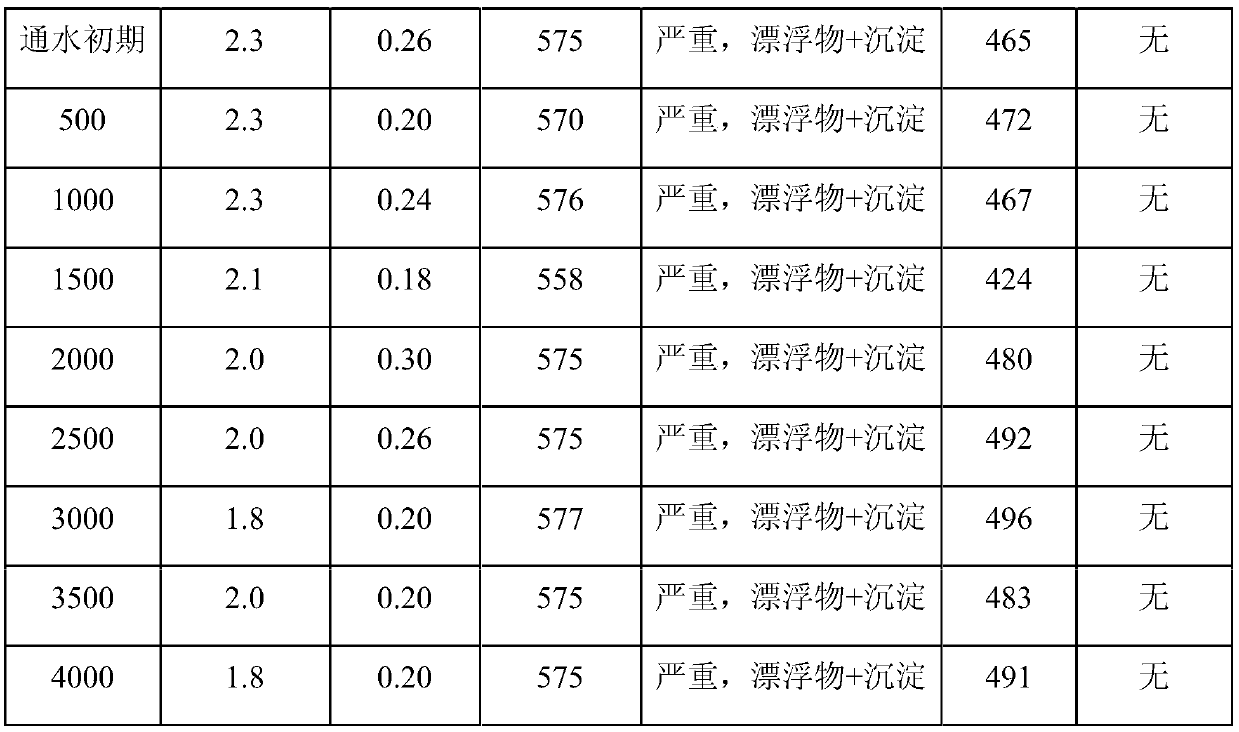Controllable slow-release polyphosphate scale inhibitor and preparation method thereof
A slow-release polyphosphate and antiscalant technology, applied in chemical instruments and methods, descaling and water softening, water/sludge/sewage treatment, etc., can solve the problems of difficult release control and high TDS, and achieve Long life, good effect of sustained release
- Summary
- Abstract
- Description
- Claims
- Application Information
AI Technical Summary
Problems solved by technology
Method used
Image
Examples
Embodiment 1
[0025] According to the mass ratio of calcium oxide 23%, concentrated phosphoric acid 40% (phosphoric acid content 85wt.%), silicon dioxide 18%, aluminum oxide 19% after mixing evenly, first react at 100°C for 1 hour, and then melt at 1600°C at high temperature , to polymerize the raw materials, and after fully reacting for 2 hours, pour into a spherical mold for molding, and then anneal and cool to obtain slow-release polyphosphate. Grind the obtained slow-release polyphosphate into powder with a grinder, add 20wt.% PVA binder (slow-release polyphosphate is 100%), carry out extrusion granulation by a screw extrusion granulator, and form a diameter of 0.5mm Controlled slow-release polyphosphate antiscalant products.
Embodiment 2
[0027] According to the mass ratio of calcium oxide 25%, concentrated phosphoric acid 36% (phosphoric acid content 85wt.%), silicon dioxide 11%, aluminum oxide 28% after mixing evenly, first react at 80°C for 2 hours, and then melt at 1300°C at high temperature , to polymerize the raw materials, and after fully reacting for 4 hours, pour it into a spherical mold for molding, and then anneal and cool to obtain slow-release polyphosphate. Gained slow-release polyphosphate is ground into powder with a grinder, and 20wt.% PVA binder (slow-release polyphosphate is 100%) is added, and extruded and granulated by a screw extrusion granulator to form a 3mm diameter pellet. Controlled slow release polyphosphate antiscalant product.
Embodiment 3
[0029] According to the mass ratio of calcium oxide 27%, concentrated phosphoric acid 32% (phosphoric acid content 85wt.%), silicon dioxide 14%, aluminum oxide 27% after mixing evenly, first react at 100°C for 2 hours, and then melt at 1500°C at high temperature , to polymerize the raw materials, and after fully reacting for 4 hours, pour it into a spherical mold for molding, and then anneal and cool to obtain slow-release polyphosphate. Gained slow-release polyphosphate is ground into powder with a grinder, and 20wt.% PVA binder (slow-release polyphosphate is 100%) is added, and extruded and granulated by a screw extrusion granulator to form a diameter of 2mm. Controlled slow release polyphosphate antiscalant product.
PUM
| Property | Measurement | Unit |
|---|---|---|
| particle diameter | aaaaa | aaaaa |
Abstract
Description
Claims
Application Information
 Login to View More
Login to View More - R&D
- Intellectual Property
- Life Sciences
- Materials
- Tech Scout
- Unparalleled Data Quality
- Higher Quality Content
- 60% Fewer Hallucinations
Browse by: Latest US Patents, China's latest patents, Technical Efficacy Thesaurus, Application Domain, Technology Topic, Popular Technical Reports.
© 2025 PatSnap. All rights reserved.Legal|Privacy policy|Modern Slavery Act Transparency Statement|Sitemap|About US| Contact US: help@patsnap.com



